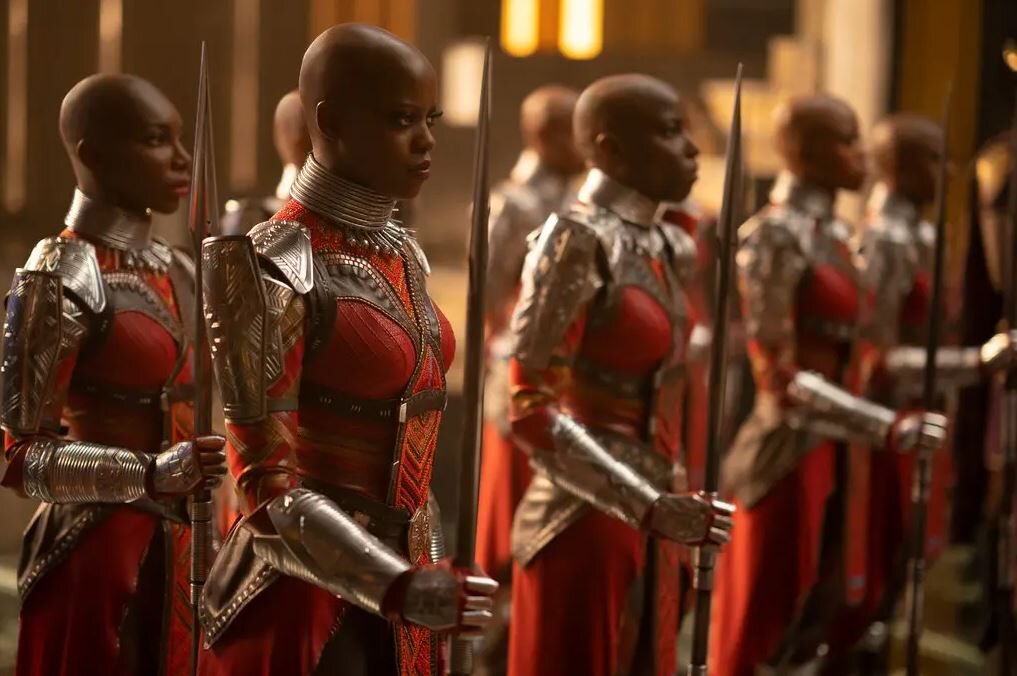What characteristics distinguish a hero from a villain? In spite of the fact that so many film franchises have attempted to add subtlety to the conflict between good and evil, the formulae that these franchises use for these characters, especially in the Marvel Cinematic Universe, seem to be excruciatingly simplistic: Heroes give stirring statements about fighting for justice as stirring theme music plays in the background. Villains? God complexes and an increase in the chicness of clothes.
The films based on the Marvel superhero “Black Panther” are a remarkable exception since they give both the heroes and the villains a level of depth that is derived from the politics surrounding colonialism and the African diaspora. In these films, the distinction between heroes and villains is not simply one between good and evil; rather, it is a boundary that is defined by the relatable ways in which each side reacts to the real enemy, which are the white nations and institutions that benefit from the enslavement and disenfranchisement of people of colour.
Both “Black Panther” and its recently released sequel, “Black Panther: Wakanda Forever,” display a love for its heroes that originates in the cultural and family tradition of the fictional nation of Wakanda. Not only does T’Challa’s (Chadwick Boseman) mother and sister serve as his moral basis, but so does his father and the Black Panthers who have gone before him. T’Challa, the monarch of Wakanda with a superhero alter persona, is anchored in and supported by his ancestry. It is significant that the ritual to choose who would succeed T’Challa as Black Panther includes being buried alive and consulting with deceased ancestors for advice.
Wakanda Forever starts with T’Challa’s passing away at the beginning of the film (from disease, like Boseman, who died from cancer in 2020). The film pays tribute to T’Challa by showing a funeral procession that is beautifully shot and choreographed. It is quite evident that the purpose of this is not only to increase the emotional stakes in the movie. “Wakanda Forever” is paying tribute to Chadwick Boseman by displaying scenes from the first movie and allowing the other characters to fully address their grief. This ensures that Boseman’s passing will not be treated as merely another plot twist or issue that the narrative will have to navigate around.
T’Challa’s generally even-keeled and empathic nature is tempered in “Black Panther” by his sometimes less than decisive political opinions. This is a contrast to T’Challa’s regular disposition. At initially, he adheres to the strategy that his family has always followed, which is to keep Wakanda and its riches closed off from the rest of the world. Then, at the conclusion of the first movie, he makes the choice to expose the existence of Wakanda, which sets off a series of events that eventually leads to the primary battle in the second movie. The untimely departure of Chadwick Boseman and, by extension, T’Challa raises the issue of how the Black Panther would have developed as king: how would he have controlled Wakanda given his determination to reject the nation’s isolationist mindset and open it up to the rest of the world?
Shuri (Letitia Wright), whom the film also entrusts to bear our fury and sadness over T’Challa’s death, is given the responsibility of answering that hefty issue in the sequel, which is a sensible move. When she consumes the Heart-Shaped Herb, she will get a vision that will help her overcome her sentiments. This vision will be signified by the apparition of Killmonger, the main adversary from the first film. This will allow her to become the Black Panther.
It is obvious that she is suffering. In the absence of T’Challa, Wakanda starts to resemble the majority of Black societies, in which the women are left to grieve and subsequently assume power when the males pass away as a result of bad health or violence. In Wakanda, however, the men no longer rule. The film “Wakanda Forever” is well aware of the persistent angry Black woman stereotype, and it overcomes it by having Shuri harness and work through her anger, ultimately evolving into the hero at the film’s conclusion. Of course Shuri feels that she has been wronged, and she spends the majority of the film being warned against her rage.
On the other hand, the antagonists in the “Black Panther” movie are not straightforward adversaries but rather people who have been oppressed by systemic racism: In the first film, Killmonger and in the second film, Namor, the protagonists are both righteously indignant men of colour who are reacting to the ways in which their communities have been devastated by a variety of different forms of racism and sexism (including capitalism, colonialism and, again, racism). Killmonger, who grew up in Oakland without a father and with all of the disadvantages that come with being a Black man in America, wants to use Wakandan technology to empower Black people all over the world. He grew up in Oakland without a father and with all of the disadvantages that come with being a Black man in America. His strategy calls for the use of force, but it is not completely unlike to that of the Black Power movement’s most extremist groups in the 1960s.
In these movies, the ultimate antagonist is a long and complicated history of white supremacy and oppression, but the adversary, who may be another person of colour or a Black person living somewhere else in the diaspora, is on the same side as the protagonist.

